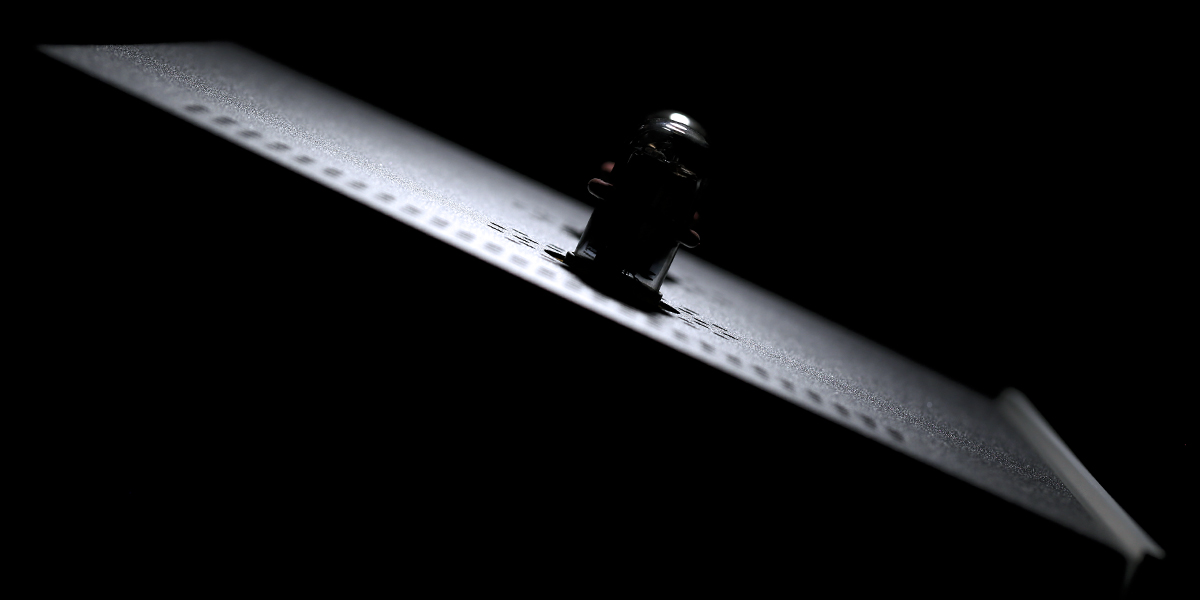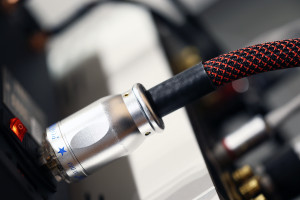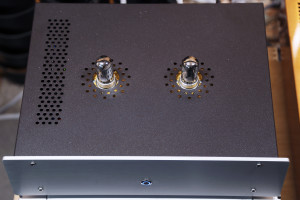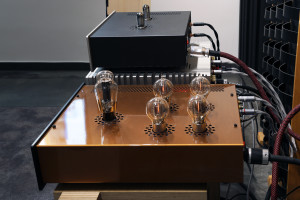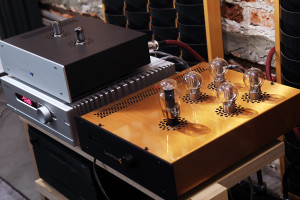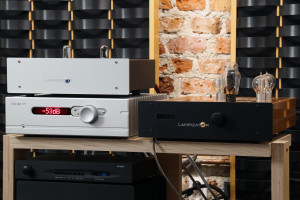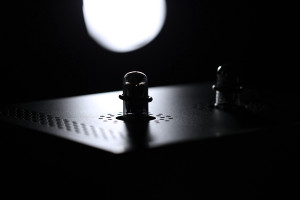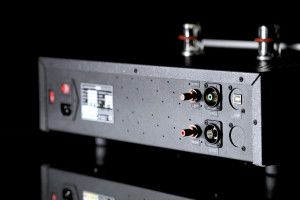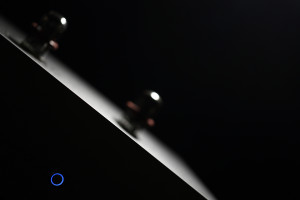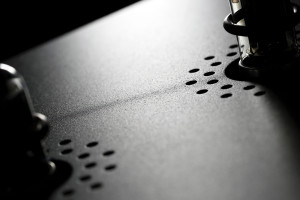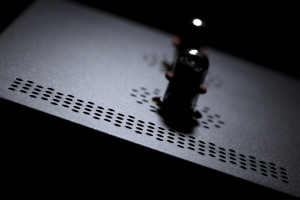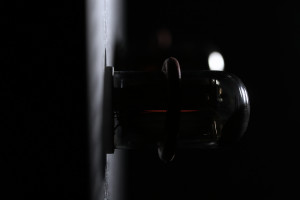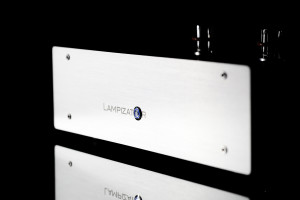Solitude can be a rewarding mistress. LampizatOr’s main man – Łukasz Fikus – found out to what extent during his time on The Atlantic Ocean in May 2016. One month under the sails was his dream come true adventure. In the middle of nowhere, creative thinking kicked in and, among other things, a suitable name for his latest and presumably the most personal source was the upshot. To commemorate said gent’s voyage, Atlantic DAC was born and is this review’s main dish. Enjoy.
Introduction
It was hard to predict what kind of a performer Atlantic DAC might be in the very beginning as several important factors were unknown at first. Łukasz merely mentioned that his latest machine is a different beast and that’s about it. The man kept all the beans for himself intentionally. What’s precious for him, as a manufacturer, is an unaltered feedback. Planting any kind of a seed in this journalist’s head wouldn’t do our Polish engineer any good, obviously. After the initial evaluation and in comparison to his top tier source tweaked to the roof, let’s get this out of the way in this instant: Atlantic is peculiar indeed. But past an introductory listening phase it’s hard to shake off the feeling that this DAC’s sound isn’t completely unknown. Herr LampizatOr obviously wanted to make a trip back in time, but why? Before answering this question, let’s start with some background storytelling.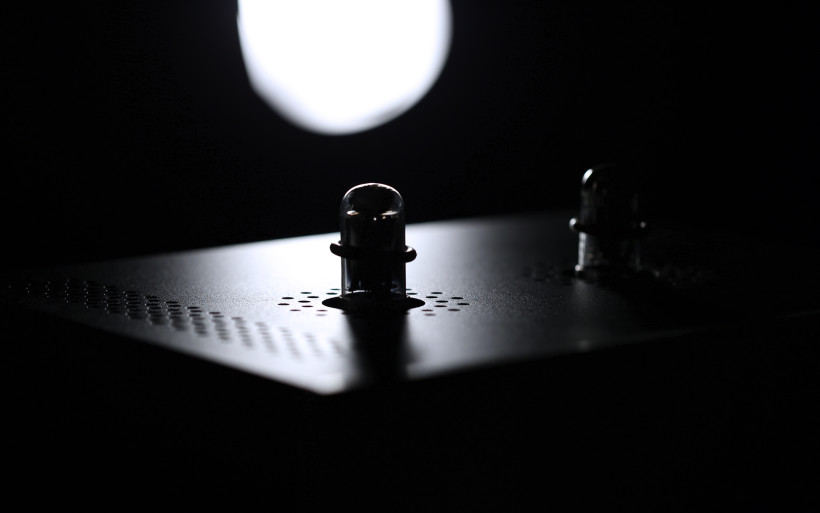 There’s nothing wrong in being upfront about what one likes in this business. And as every engineer and an audio enthusiast, Łukasz has his own kinks, namely TDA1541, PCM1704 and alike. He grew very fond of vintage R2Rs because of their sound. Neither he hides, nor denies it as a silicone of this kind is the place, where his roots grow after all. Yet at the same time he’s also aware of how unpractical said chips are these days from his engineering perspective. One can’t get away with simple circuitry in case of aforementioned parts when the hottest functionality (i.e. DSD) is at stake. On the contrary, things become heavily complicated then, whereas simplicity is one of LampizatOr’s trademarks. With vintage R2R d/a converters, many problems need to be taken care of in the first place and i.e. PCM1704 is considered to be an engineer’s hell. To ease his own curiosity, as an exercise and DSD engine’s success aside, Łukasz decided to think past R2R silicone, yet in the same vein. Such mindset led him towards a specific module of this very sort. It worked soundwise, our man found what he was looking for.
There’s nothing wrong in being upfront about what one likes in this business. And as every engineer and an audio enthusiast, Łukasz has his own kinks, namely TDA1541, PCM1704 and alike. He grew very fond of vintage R2Rs because of their sound. Neither he hides, nor denies it as a silicone of this kind is the place, where his roots grow after all. Yet at the same time he’s also aware of how unpractical said chips are these days from his engineering perspective. One can’t get away with simple circuitry in case of aforementioned parts when the hottest functionality (i.e. DSD) is at stake. On the contrary, things become heavily complicated then, whereas simplicity is one of LampizatOr’s trademarks. With vintage R2R d/a converters, many problems need to be taken care of in the first place and i.e. PCM1704 is considered to be an engineer’s hell. To ease his own curiosity, as an exercise and DSD engine’s success aside, Łukasz decided to think past R2R silicone, yet in the same vein. Such mindset led him towards a specific module of this very sort. It worked soundwise, our man found what he was looking for. To summarize, said gent wanted to achieve the so-called vintage sound, heavily focused on emotions and music, that’s his way of saying “hi” to the past. But without both functionality and sound trade-offs and with currently available in large quantities, non-problematic parts. Welcome to present times, yay. Where’s the sidestep then? Directly heated pentodes, a.k.a. DHPs, that’s what seals our Atlantic deal. One of Herr LampizatOr’s friends – Miroslav Vodehnal – tipped our man about exceptional 4P1L NOS valves of DHP sort. Again, curiosity took over as everything directly heated is the thing in LampizatOr’s camp lately. Łukasz tried these in Atlantic (back then he hadn’t had a name for this device) already equipped with R2R module and was blown away. He got a vintage sound he so dearly enjoyed… and then some.
To summarize, said gent wanted to achieve the so-called vintage sound, heavily focused on emotions and music, that’s his way of saying “hi” to the past. But without both functionality and sound trade-offs and with currently available in large quantities, non-problematic parts. Welcome to present times, yay. Where’s the sidestep then? Directly heated pentodes, a.k.a. DHPs, that’s what seals our Atlantic deal. One of Herr LampizatOr’s friends – Miroslav Vodehnal – tipped our man about exceptional 4P1L NOS valves of DHP sort. Again, curiosity took over as everything directly heated is the thing in LampizatOr’s camp lately. Łukasz tried these in Atlantic (back then he hadn’t had a name for this device) already equipped with R2R module and was blown away. He got a vintage sound he so dearly enjoyed… and then some.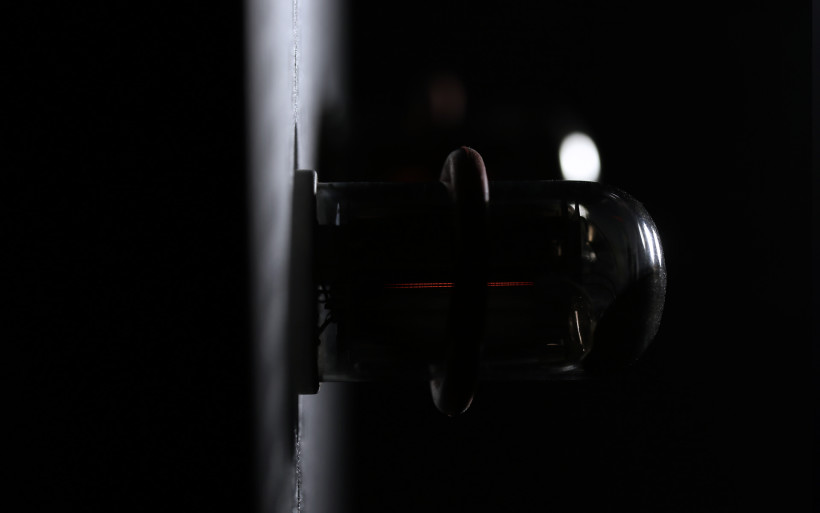 Sometimes it’s good to take a step back, think of what’s already in the past and move from there. In Atlantic’s case, that’s what our engineer did. But he’s also a marketing person. To some degree he has to be in order to stay in the audio game. His latest DAC isn’t only about sentiments. This very up-to-date machine has some marketing behind it as well. It’s about R2R again. From Herr LampizatOr’s perspective, previous year was DSD heavy. The market got saturated, many Golden Gate’s and alike are out there already. Now R2R is the thing, though people from i.e. TotalDAC or Metrum are on-board with this topology for years now. Atlantic DAC isn’t that new too, it’s been in the making since early 2016.
Sometimes it’s good to take a step back, think of what’s already in the past and move from there. In Atlantic’s case, that’s what our engineer did. But he’s also a marketing person. To some degree he has to be in order to stay in the audio game. His latest DAC isn’t only about sentiments. This very up-to-date machine has some marketing behind it as well. It’s about R2R again. From Herr LampizatOr’s perspective, previous year was DSD heavy. The market got saturated, many Golden Gate’s and alike are out there already. Now R2R is the thing, though people from i.e. TotalDAC or Metrum are on-board with this topology for years now. Atlantic DAC isn’t that new too, it’s been in the making since early 2016.
Build
According to industry standards, Atlantic DAC is big. But if one asks LampizatOr guys, this machine is very small to them. Actually, Level4 box used in this case, is the smallest one they make, of Amber sort for instance. It measures (W x H x D) 43 x 12 x 33 cm and device’s total weigh is 11 kilograms. Peripherals, foams and cardboard box are three more. The review loaner sent to yours truly was a single-ended product in its most basic form, with no additions. It’ll set one back for €4’000. Before we go to its details, it’s worth to stop at available options menu. Rectifier tube is additional €500, balanced version cost €1’000 more. Remote control volume with preamp input is priced at €1’000 as well, so is proprietary DSD512 engine. If one wishes to have only the last addition without PCM board at all, said change is free of charge. To summarize, fully upgraded Atlantic is sold for €6’500. Atlantic DAC looks like a regular LampizatOr affair, there won’t be any new discoveries in that regard. It looks plain. Its front is a solid aluminium plate with just one button in the middle. Instead of switching the device on, it enables/disables the USB input. Though it’s worth to know that some other functions, like a coaxial and optical S/PDIF switch can be done too. The chassis, though it looks rather familiar, changed a bit. Now it’s been coated with pebble alike lacquer and it looks very nice, much better than plainly black. On device’s top there are many perforations, similar to what’s been done in my Golden Gate’s case. Not only these align in a nice pattern, but are responsible for heat dissipation from Atlantic’s inside. Two NOS 4P1L valves of rare DHP kind protrude boldly. If one wishes to have a rectifier installed, it presumably goes between these and slightly towards the product’s front. Not much is going on on its back. Type B USB input, two S/PDIFs (coaxial and BNC), a pair of RCA outputs and an IEC socket with easily swappable fuse are the usual suspects.
Atlantic DAC looks like a regular LampizatOr affair, there won’t be any new discoveries in that regard. It looks plain. Its front is a solid aluminium plate with just one button in the middle. Instead of switching the device on, it enables/disables the USB input. Though it’s worth to know that some other functions, like a coaxial and optical S/PDIF switch can be done too. The chassis, though it looks rather familiar, changed a bit. Now it’s been coated with pebble alike lacquer and it looks very nice, much better than plainly black. On device’s top there are many perforations, similar to what’s been done in my Golden Gate’s case. Not only these align in a nice pattern, but are responsible for heat dissipation from Atlantic’s inside. Two NOS 4P1L valves of rare DHP kind protrude boldly. If one wishes to have a rectifier installed, it presumably goes between these and slightly towards the product’s front. Not much is going on on its back. Type B USB input, two S/PDIFs (coaxial and BNC), a pair of RCA outputs and an IEC socket with easily swappable fuse are the usual suspects. At this point I should write about Atlantic’s innards and try to decipher hidden components, yet it won’t happen this time. The loaner sent to me was a pre-production version, with its inside not as tidy as in final units. Łukasz asked me politely to not show it and I agreed. But I took a peek under the hood nonetheless and here’s what I’ve found. Amanero USB receiver connects to a rather big R2R OEM module, assembled in SMD fashion. For the first time in LampizatOr product, it senses and switches the signal automatically, it doesn’t matter whether it’s a DSD or PCM. The signal is moved from there to an analog board, which looks like a smaller version of what’s inside my Golden Gate. This picture wouldn’t be complete without output capacitors. But this time around no Duelunds, Jensens anywhere in sight. LampizatOr rolls with its own now, they’re called PureCopper. And yes, these are based on a copper foil and made by one of local suppliers, according to Herr LampizatOr’s specs. Atlantic DAC has a power supply taken from Lite7 DAC, which means it consists of one Toroidal transformer, one choke and one proprietary stabilization module.
At this point I should write about Atlantic’s innards and try to decipher hidden components, yet it won’t happen this time. The loaner sent to me was a pre-production version, with its inside not as tidy as in final units. Łukasz asked me politely to not show it and I agreed. But I took a peek under the hood nonetheless and here’s what I’ve found. Amanero USB receiver connects to a rather big R2R OEM module, assembled in SMD fashion. For the first time in LampizatOr product, it senses and switches the signal automatically, it doesn’t matter whether it’s a DSD or PCM. The signal is moved from there to an analog board, which looks like a smaller version of what’s inside my Golden Gate. This picture wouldn’t be complete without output capacitors. But this time around no Duelunds, Jensens anywhere in sight. LampizatOr rolls with its own now, they’re called PureCopper. And yes, these are based on a copper foil and made by one of local suppliers, according to Herr LampizatOr’s specs. Atlantic DAC has a power supply taken from Lite7 DAC, which means it consists of one Toroidal transformer, one choke and one proprietary stabilization module.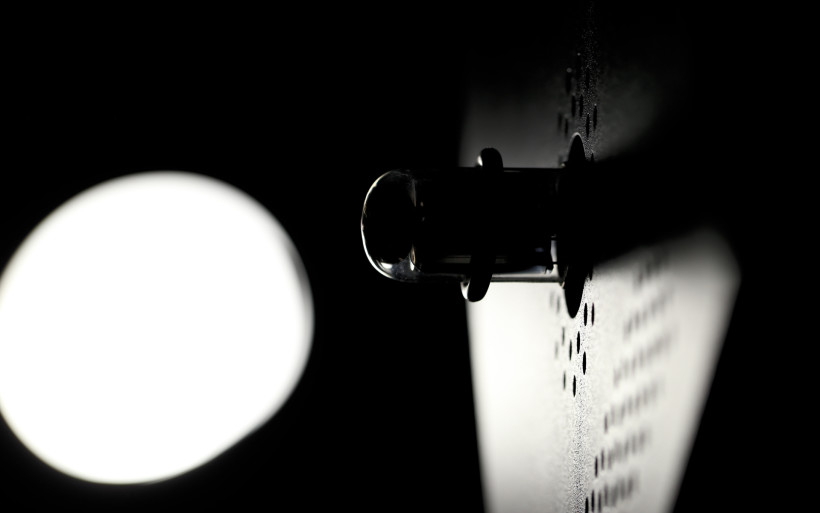 Before we go any further, some things need to be clarified. It was somewhat coincidental that Atlantic is the very first d/a converter with directly heated pentodes and an R2R ladder. It wasn’t designed for bragging rights. Łukasz says that it’s been built in such way because the combination of aforementioned parts sounds very good, that’s the main reason. But he also wanted to build a product of vintage-alike sort and equipped with easily obtainable and affordable tubes. And Atlantic fits LampizatOr’s profile; no global feedback, no op-amps or transistors in signal circuitry and minimalistic topology. This product simply clicked on many levels. Łukasz says that – as a package – it’s the best DAC in the world. I’ll restrain myself from commentary here.
Before we go any further, some things need to be clarified. It was somewhat coincidental that Atlantic is the very first d/a converter with directly heated pentodes and an R2R ladder. It wasn’t designed for bragging rights. Łukasz says that it’s been built in such way because the combination of aforementioned parts sounds very good, that’s the main reason. But he also wanted to build a product of vintage-alike sort and equipped with easily obtainable and affordable tubes. And Atlantic fits LampizatOr’s profile; no global feedback, no op-amps or transistors in signal circuitry and minimalistic topology. This product simply clicked on many levels. Łukasz says that – as a package – it’s the best DAC in the world. I’ll restrain myself from commentary here.
Sound
Usually DAC switches are troublesome, yet Amanero USB module fitted into every LampizatOr source makes things very convenient if one wishes to conduct some AB comparisons. Hence there was no need to turn off any of sources used, the same story goes with transport. Atlantic DAC can autodetect incoming data, whether it’s PCM or DSD. That’s another convenience. So the only thing left to do was to adjust the volume, swap two cables and… voilà. Some Foobar2000 changes were required due to Golden Gate’s PCM engine bypass, though. Also it’s worth to keep in mind that this device was equipped with a set of four WE101D-L DHTs and on KR Audio 5U4G rectifier tube. This is merely one combination out of many, but it does the job just fine.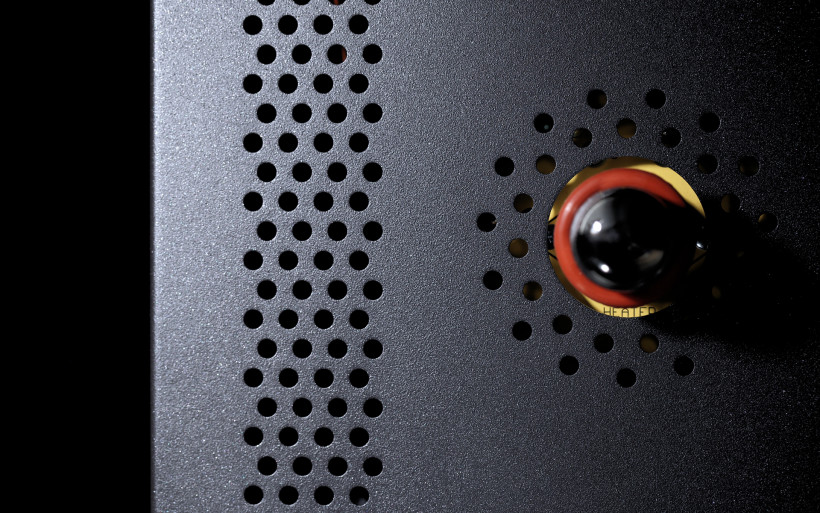 Here’s where this reviewer’s story kicks off. Earlier LampizatOr’s DACs (generation 3rd or 4th), at least devices known to me, sounded slightly laid back, dark, coherently, texturally rich, very smooth, clean and rather gentle. It was heard that surgical precision wasn’t a part of said machines’ nature, though there was no complaint on my end regarding detail retrieval. This aspect was very good; informative and served in a fatigueless fashion. The same story was with involving and romantic character. Not overly sweet, yet generously dense, vivid and, so to speak, literally wet sound is something I remember rather well even today. There were some subjective trade-offs, though. Highs were slightly rolled-off to some enthusiasts, the bass wasn’t exceptionally punchy and so on. But it’s worth to know that Łukasz isn’t and never was into sound extremes. His goal wasn’t to build the fastest/densest/airiest/coldest or darkest sounding DAC on the market. I think that with his older designs he strived for quite neutral, yet polished and vivid sound signature. In my subjective experience, older LampizatOr devices slightly on the darker side at first, past accommodation phase turned out to be rather neutral and easygoing, whereas competitors’ representatives were often overly bright fatigue providers. But what counts is that many people into music and emotions have found Polish DACs to be outstanding performers because of the reasons described above.
Here’s where this reviewer’s story kicks off. Earlier LampizatOr’s DACs (generation 3rd or 4th), at least devices known to me, sounded slightly laid back, dark, coherently, texturally rich, very smooth, clean and rather gentle. It was heard that surgical precision wasn’t a part of said machines’ nature, though there was no complaint on my end regarding detail retrieval. This aspect was very good; informative and served in a fatigueless fashion. The same story was with involving and romantic character. Not overly sweet, yet generously dense, vivid and, so to speak, literally wet sound is something I remember rather well even today. There were some subjective trade-offs, though. Highs were slightly rolled-off to some enthusiasts, the bass wasn’t exceptionally punchy and so on. But it’s worth to know that Łukasz isn’t and never was into sound extremes. His goal wasn’t to build the fastest/densest/airiest/coldest or darkest sounding DAC on the market. I think that with his older designs he strived for quite neutral, yet polished and vivid sound signature. In my subjective experience, older LampizatOr devices slightly on the darker side at first, past accommodation phase turned out to be rather neutral and easygoing, whereas competitors’ representatives were often overly bright fatigue providers. But what counts is that many people into music and emotions have found Polish DACs to be outstanding performers because of the reasons described above.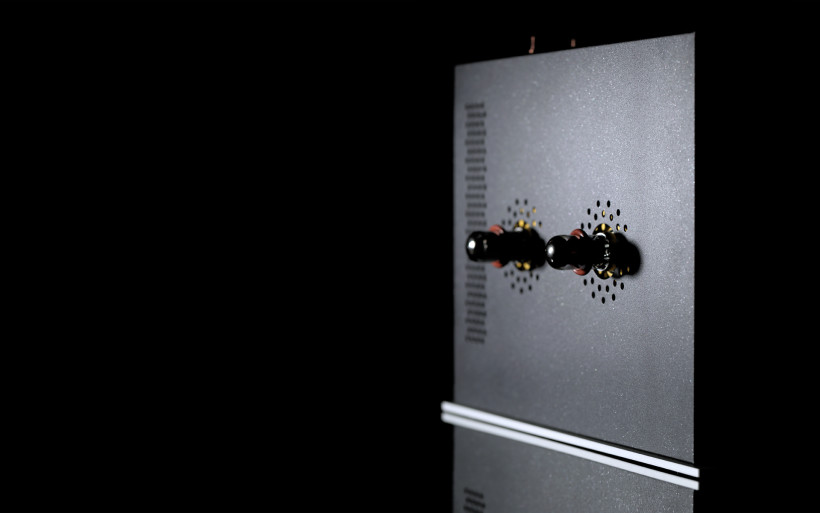 Atlantic model fits aforementioned profile to quite an extent, not magnifying power but pleasure delivery is its core business. To put it even more bluntly, this source in many ways sounds like Herr LampizatOr’s earlier work. Yet it does so much more and is impressive as hell. Not showy, but impressive. From my perspective, said DAC isn’t encumbered with subjective issues of R2R based LampizatOr’s from years back. Of course in order to make this statement factual, some AB comparing between Atlantic and one of its many grandfathers should be in order. It won’t happen as I’m not equipped properly to handle this task, you’ll have to trust me on this one. But what comes to play instead is Golden Gate, an up-to-date and quite known Polish flagship, therefore very useful. With Atlantic, what I believe has happened is that Łukasz wanted it to have a vintage character, yet at the same time more modern and universal than his older R2Rs. He achieved that exactly. This means that said machine’s sound is free from perceptible roll-offs and omnipresently dark background no matter the scenario. Not only it’s clear and more precise in comparison to older DACs from the same manufacturer, but is able to shift and balance tonal proportions swiftly and accordingly to genre played. Atlantic’s sound isn’t neither veiled, nor lit up. Yet always present, a listener is constantly drawn into music instead of focusing on technicals. To what degree, you ask? Deeper than Golden Gate and in that sense, Atlantic is ahead. With this DAC, there’s more music in music, it’s safe to say that it’s juicier in a way. But there’s more, much more.
Atlantic model fits aforementioned profile to quite an extent, not magnifying power but pleasure delivery is its core business. To put it even more bluntly, this source in many ways sounds like Herr LampizatOr’s earlier work. Yet it does so much more and is impressive as hell. Not showy, but impressive. From my perspective, said DAC isn’t encumbered with subjective issues of R2R based LampizatOr’s from years back. Of course in order to make this statement factual, some AB comparing between Atlantic and one of its many grandfathers should be in order. It won’t happen as I’m not equipped properly to handle this task, you’ll have to trust me on this one. But what comes to play instead is Golden Gate, an up-to-date and quite known Polish flagship, therefore very useful. With Atlantic, what I believe has happened is that Łukasz wanted it to have a vintage character, yet at the same time more modern and universal than his older R2Rs. He achieved that exactly. This means that said machine’s sound is free from perceptible roll-offs and omnipresently dark background no matter the scenario. Not only it’s clear and more precise in comparison to older DACs from the same manufacturer, but is able to shift and balance tonal proportions swiftly and accordingly to genre played. Atlantic’s sound isn’t neither veiled, nor lit up. Yet always present, a listener is constantly drawn into music instead of focusing on technicals. To what degree, you ask? Deeper than Golden Gate and in that sense, Atlantic is ahead. With this DAC, there’s more music in music, it’s safe to say that it’s juicier in a way. But there’s more, much more.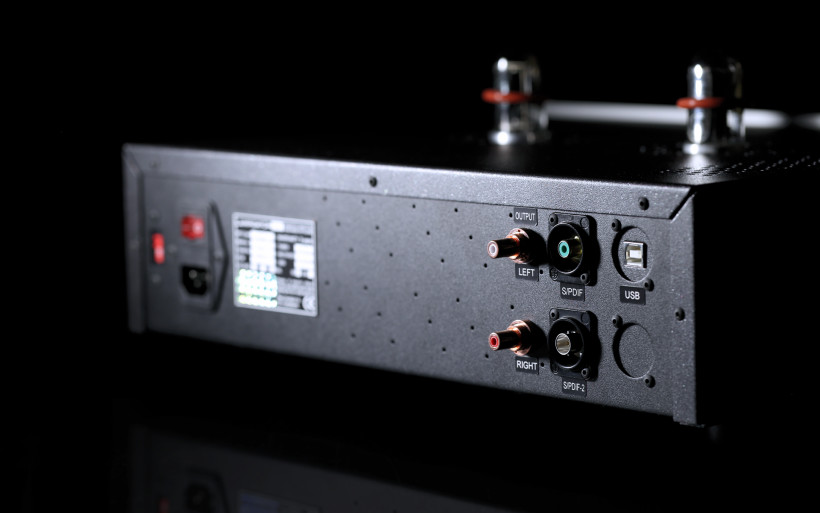 With tubes listed below, Golden Gate’s quality struck me. There is a number of factors behind why I consider it the best source known to me. First of all, the soundstage. It’s enormous and pinpoint accurate. I know of no other source able to show all layers, instruments’ proportions and distances between these and a listener so effortlessly and precisely. With spaciously sounding speakers, said DAC easily covers every inch of the surface between and behind these. Needless to say, Golden Gate, Boenicke W8 floorstanders and Trilogy 925 combo left many of my visitors with their jaws on the floor. This DAC is also very upfront when needed, its impact is not only heard, but felt. It marvelously shows the scale of events in front of a listener and dynamic contrasts in music. But when it becomes soft and calm, this exactly will be heard. Aspects like smoothness, vividness, clarity or tangibility are a part of the whole as well. At this point I can’t single out any of Golden Gate’s aspects I’d like to change. It’s a part of the big rig for more than a year, I know it quite well. Now the obvious question is in order: what about Atlantic in this context?
With tubes listed below, Golden Gate’s quality struck me. There is a number of factors behind why I consider it the best source known to me. First of all, the soundstage. It’s enormous and pinpoint accurate. I know of no other source able to show all layers, instruments’ proportions and distances between these and a listener so effortlessly and precisely. With spaciously sounding speakers, said DAC easily covers every inch of the surface between and behind these. Needless to say, Golden Gate, Boenicke W8 floorstanders and Trilogy 925 combo left many of my visitors with their jaws on the floor. This DAC is also very upfront when needed, its impact is not only heard, but felt. It marvelously shows the scale of events in front of a listener and dynamic contrasts in music. But when it becomes soft and calm, this exactly will be heard. Aspects like smoothness, vividness, clarity or tangibility are a part of the whole as well. At this point I can’t single out any of Golden Gate’s aspects I’d like to change. It’s a part of the big rig for more than a year, I know it quite well. Now the obvious question is in order: what about Atlantic in this context?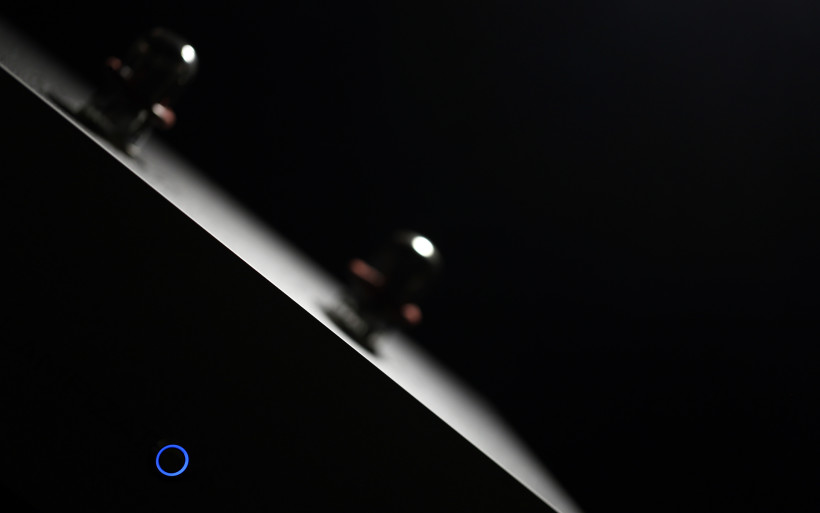 Let’s start with statement that both Polish machines have some things in common, namely soundstage. Atlantic has it just slightly less wide, but as tall, deep and impressive overall. It has a bit elliptical shape. Left and right side of the picture painted by Atlantic DAC is similar to Golden Gate, but what’s between the speakers the former shows a bit further away. This is one of the reasons why the latter has more direct character, even though Atlantic tends to focus listener’s attention on events in front of him directly. But what’s important here is that the space LampizatOr’s latest machine creates is also very accurate and multi-layered. To keep up with Golden Gate in this regard is something to behold. There are no losers here, on the contrary to different flavouring.
Let’s start with statement that both Polish machines have some things in common, namely soundstage. Atlantic has it just slightly less wide, but as tall, deep and impressive overall. It has a bit elliptical shape. Left and right side of the picture painted by Atlantic DAC is similar to Golden Gate, but what’s between the speakers the former shows a bit further away. This is one of the reasons why the latter has more direct character, even though Atlantic tends to focus listener’s attention on events in front of him directly. But what’s important here is that the space LampizatOr’s latest machine creates is also very accurate and multi-layered. To keep up with Golden Gate in this regard is something to behold. There are no losers here, on the contrary to different flavouring. Moving on, suave approach is the Atlantic’s way. This product can be feisty, yet is audibly slower, gutsier and a bit more forgiving than Golden Gate. But the latter reaches lower, has more control there and simply punches harder in the process. The former shifts weigh to upper bass frequencies, is rounder and more massive overall. It’s factual to say that Golden Gate sounds edgier yet never too stiff, whereas Atlantic never becomes too bloated and watery, despite of its gentler nature. These exaggeration flaws simply aren’t a part of described sources’ performance and to pull this off, Łukasz Fikus has to know what he’s doing. Such an outcome can’t be random. Another distinctive difference between both machines is treble handling. Golden Gate’s highs are very good; smooth, well-differentiated and subtle. Yet this DAC is more sparkly in this regard in comparison to Atlantic, which represents subtler attitude; shinier, more delicate and a bit ethereal on the very top of audible FR. Again, pick your poison. In my book both products leave the battleground with a shield. Quite similar story is with vocals. It’s a case of more intimate, direct and taut Golden Gate’s character versus Atlantic’s greater mass and slight withdrawal in the flagship’s context.
Moving on, suave approach is the Atlantic’s way. This product can be feisty, yet is audibly slower, gutsier and a bit more forgiving than Golden Gate. But the latter reaches lower, has more control there and simply punches harder in the process. The former shifts weigh to upper bass frequencies, is rounder and more massive overall. It’s factual to say that Golden Gate sounds edgier yet never too stiff, whereas Atlantic never becomes too bloated and watery, despite of its gentler nature. These exaggeration flaws simply aren’t a part of described sources’ performance and to pull this off, Łukasz Fikus has to know what he’s doing. Such an outcome can’t be random. Another distinctive difference between both machines is treble handling. Golden Gate’s highs are very good; smooth, well-differentiated and subtle. Yet this DAC is more sparkly in this regard in comparison to Atlantic, which represents subtler attitude; shinier, more delicate and a bit ethereal on the very top of audible FR. Again, pick your poison. In my book both products leave the battleground with a shield. Quite similar story is with vocals. It’s a case of more intimate, direct and taut Golden Gate’s character versus Atlantic’s greater mass and slight withdrawal in the flagship’s context.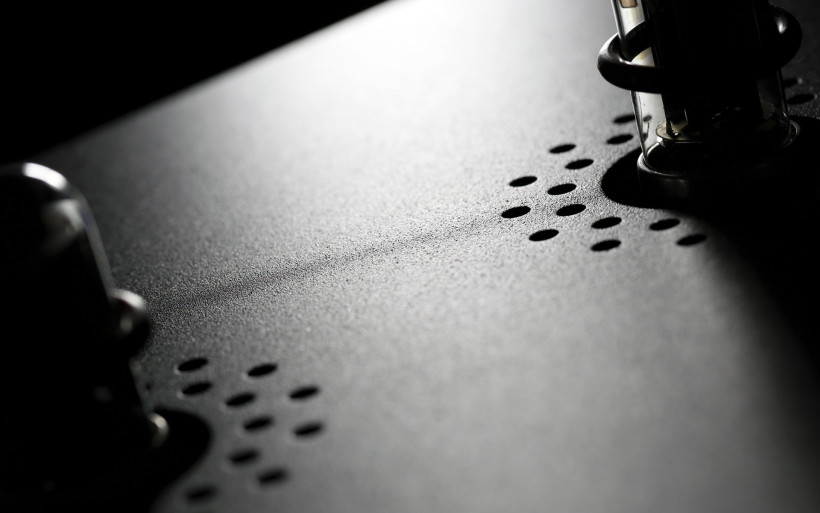 Quite generous report above is of rather technical nature. It may be helpful for individuals who own one of described devices already, eager to know whether it’s time for a LampizatOr change. “A bit less of this, a bit more of that” commentary sheds some informative light here. Yet on a sound level this high, it goes much deeper than that. Subjectively, Golden Gate does the job for me as a journalist. With this device, after every gear swap I hear every change I should hear, which hopefully makes my work meaningful and credible. My responsibility as a reviewer is to properly describe the sound of a product and LampizatOr’s flagship is a very helpful tool to achieve that goal indeed. Atlantic is a bit less resolving source, that’s true. But journalistic duties aside, I’m also an enthusiast and from this perspective it gets really tricky, here’s why: Atlantic DAC is scarily good, even in Golden Gate’s presence. It really is.
Quite generous report above is of rather technical nature. It may be helpful for individuals who own one of described devices already, eager to know whether it’s time for a LampizatOr change. “A bit less of this, a bit more of that” commentary sheds some informative light here. Yet on a sound level this high, it goes much deeper than that. Subjectively, Golden Gate does the job for me as a journalist. With this device, after every gear swap I hear every change I should hear, which hopefully makes my work meaningful and credible. My responsibility as a reviewer is to properly describe the sound of a product and LampizatOr’s flagship is a very helpful tool to achieve that goal indeed. Atlantic is a bit less resolving source, that’s true. But journalistic duties aside, I’m also an enthusiast and from this perspective it gets really tricky, here’s why: Atlantic DAC is scarily good, even in Golden Gate’s presence. It really is. Once technicals of tonal balance, saturation and alike are no more, what’s left is an emotional factor, namely feelings one has while hearing a specific device in a well-known environment. Rest assured that Atlantic DAC delivers emotions like a champ. It can show marvelous calmness in music without artificially slowing it down. It builds tension like no other DAC known to yours truly. Thanks to slightly darker and less upfront approach, its character is more romantic than vibrant Golden Gate’s and it involves listener to a deeper degree in the process. If I had to single out a greater tearjerker, LampizatOr’s latest would be my pick undoubtedly.
Once technicals of tonal balance, saturation and alike are no more, what’s left is an emotional factor, namely feelings one has while hearing a specific device in a well-known environment. Rest assured that Atlantic DAC delivers emotions like a champ. It can show marvelous calmness in music without artificially slowing it down. It builds tension like no other DAC known to yours truly. Thanks to slightly darker and less upfront approach, its character is more romantic than vibrant Golden Gate’s and it involves listener to a deeper degree in the process. If I had to single out a greater tearjerker, LampizatOr’s latest would be my pick undoubtedly.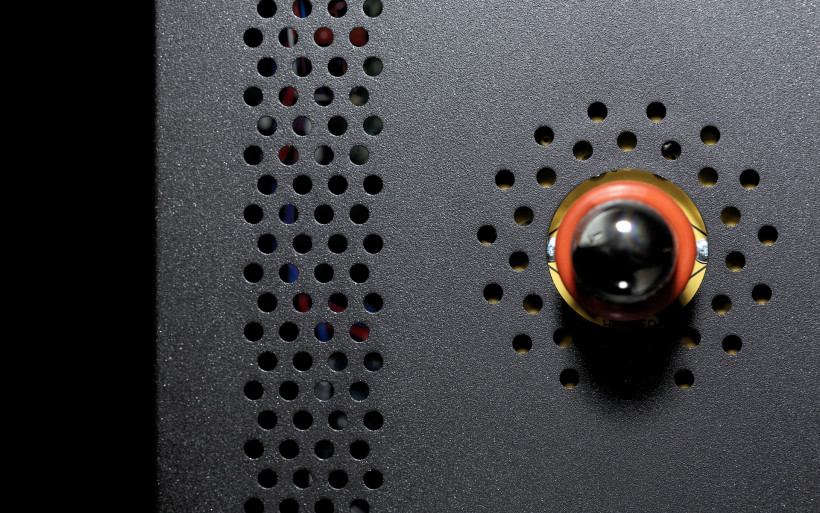 With Atlantic, it’s exceptionally hard to stop listening to Colin Stetson & Sarah Neufeld and some other minimalistic ensembles of this sort. Golden Gate already pictures this kind of a performance exceptionally well. Yet the former source even more strongly entangles into such music and said status quo maintains no matter the used equipment. Golden Gate offers more recording knowledge, speed and grander scale in exchange for a bit less musical approach, Atlantic’s case is the opposite. But the key thing here is that in both scenarios there were no mismatches, the outcome not even once was too extreme. Atlantic has found its way even with dense and rather sluggish Xavian Perla monitors. It was able to show that marvelous Czech midrange and overall saturation, yet without said monitors’ drawbacks emphasis. Even though theoretically it shouldn’t and I was ready to be overwhelmed by warmth and weigh, nothing like that happened and the effect was very enjoyable nonetheless. Time to finish this material.
With Atlantic, it’s exceptionally hard to stop listening to Colin Stetson & Sarah Neufeld and some other minimalistic ensembles of this sort. Golden Gate already pictures this kind of a performance exceptionally well. Yet the former source even more strongly entangles into such music and said status quo maintains no matter the used equipment. Golden Gate offers more recording knowledge, speed and grander scale in exchange for a bit less musical approach, Atlantic’s case is the opposite. But the key thing here is that in both scenarios there were no mismatches, the outcome not even once was too extreme. Atlantic has found its way even with dense and rather sluggish Xavian Perla monitors. It was able to show that marvelous Czech midrange and overall saturation, yet without said monitors’ drawbacks emphasis. Even though theoretically it shouldn’t and I was ready to be overwhelmed by warmth and weigh, nothing like that happened and the effect was very enjoyable nonetheless. Time to finish this material.
Summary
This review’s summary could easily consist of one catchy phrase: “What. A. DAC.” and that would be sufficient in Atlantic’s case, I assure you. This is a truly remarkable product on many levels. Yes, it looks rather rough, all of LampizatOr sources do, and that’s an inherent and distinctive part of this Polish package. But beyond this aspect, things are as tasty as it gets with this source.
Atlantic is convenient. No software upsampling, no tube rolling, no big space needs… no problem. It handles every file out there and works flawlessly, and because of this, it can be used casually. It arrives soundwise after mere minutes, there’s no need to wait an hour or two, which is the case with Golden Gate. There’s no preparation phase with Atlantic, no heavyweight celebration/calibration has to be done in order to receive everything this source has to offer. Call it a nice quality-of-life change.
But it’s the music where the real celebrating starts. To say that Atlantic is a great performer would be an understatement. After an extensive battle with Golden Gate, one must admit that the former source is soundwise shockingly good. Yes, greatly different outcomes can be achieved with Herr LampizatOr’s flagship, after some tube rolling. I have not tried Takatsuki, nor NOS Western Electric, Elrog or Emission Labs bulbs, therefore I only had a chance to sample several of the many flavours available. But still, the basic €4’000 Atlantic performed amazingly well against the €18’000 Golden Gate marvel. In some aspects it fell a bit behind, and in one it was in fact better, but most of the time it was different and in the end, left me utterly impressed.
The takeaway for this review is that Atlantic is a pleasure machine, an exceptional mood maker and a very liquid performer. Different than Golden Gate, yet capable of outstanding things nonetheless. This is a DAC everyone should listen to and the very first one, since the purchase of Golden Gate, that I would really like to have nearby. It’s that good. ‘Till next time.
- Loudspeakers: Boenicke Audio W8, Xavian Perla
- Amplifiers: Trilogy 925, Sanders Sound Sustems Magtech
- Digital source: Lampizator Golden Gate (WE101D-L + 5U4G Ltd. Ed.)
- Interconnects: Albedo Monolith, DIY UPOCC 7N cryo treated copper XLR
- Speaker cable: Albedo Monolith, Phy-Hp solid core
- Power chords: Forza AudioWorks Noir Concept, Gigawatt LC-2 MK2
- Power delivery: Gigawatt PF-2 mk2
- Equipment racks: Lavardin K-Rak
- Music: NativeDSD
- Playback platform: Roon
Retail prices of reviewed components in EU:
- LampizatOr Atlantic: €4’000
Manufacturer: LampizatOr


